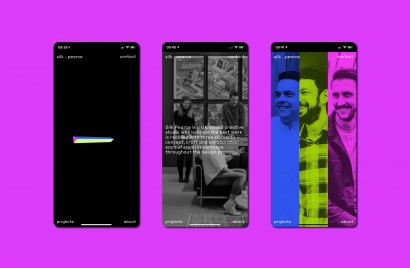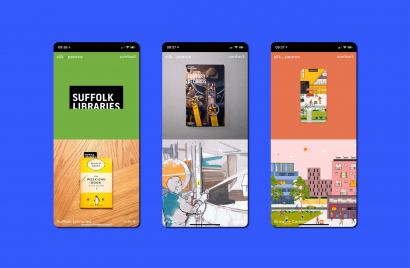
OceanSaver crabs promote plastic-free cleaning products
The campaign by Hearts and Minds, ‘The Ocean will Thank You’ focuses on positivity to encourage sustainable shopping habits

As online content becomes our primary mode of brand engagement, Ian Coote, Creative Partner at Silk Pearce writes that it’s time to embrace craft’s essential role in digital design.

Craftsmanship is not typically associated with the digital realm. Historically, we affiliate craft with making and creating objects by hand, from letterpress typography to hand-bound books. Yet, the world is fast becoming digital-first, which is only accelerating during the era of social distancing. As online content becomes our primary mode of brand engagement, it’s time to rethink the perception of craft as purely physical and embrace its essential role in digital design.
In broad terms, craftsmanship is the dedication to perfecting a certain skill to create products that ultimately satisfy its user. Is mastering the art of digital design not a skill equal to carpentry or ceramics? As our digital consumption continues to rise, the need for digital craftsmen rises with it. The sophistication of virtual canvases is ever enhancing and require true skill and manipulation, meaning that they deserve the same attention and recognition as their physical parallels.
Never before has a brand’s digital offering been such a decisive factor in consumer interaction and, ultimately, loyalty.
Ian Coote
Yet, with craft now equally present in web, video and virtual design as it is in physical creations, digital craftsmanship’s value and importance continues to go unsung. Where physical craft is seen as durable and long-lasting, digital content is viewed as it’s polar opposite: instant and transient. Indeed, it can be easy to miss, from a subtle animation to a UX design that has involved hours of meticulous thought. The layers of creative thinking behind those elements are equally as skilful as the artistry put into books, packaging or any other physical creation. In fact, the beauty of digital design lies in its subtleties and nuances.
Interaction design, which involves elements such as animation, motion, sound and space, is a useful example of the powerful nuance of digital craftsmanship. In simple terms, interaction design is about making the relationship between user and product most efficient. A subtle typographical or animation change to a home page link, for example, can significantly improve its clarity, enhancing user efficiency. What seems straightforward to the naked eye is in fact part of a larger, multi-layered design process that weaves together to create an optimum digital experience.
It is this attention to detail across the board that truly allows digital craftsmanship to flex its design muscle. The recent rise in website template services has seen brands often opt for standardised, cookie-cutter web design. Yet, these services simply don’t offer the level of personalisation that web designers can bring to the table. As brands are increasingly judged on their digital offering, investing in specialised digital expertise is more important than ever.
And let’s not forget that digital designers do not totally abandon traditional design. In fact, the power of digital craftsmen lies in their ability to merge the traditional and the new. Mastering well-established design techniques and transporting them into virtual platforms is a unique and powerful skill, one that branders and marketers should embrace further.
With digital craftsmanship clearly playing an important role in effective brand messaging, isn’t it time we gave it the recognition, attention and celebration that it deserves? It is fair to say that, in today’s digital-driven market, a brand without a digital presence is unlikely to make the cut. Digital branding allows any company to make their presence known to the consumer via the device in the palm of their hand. With multiple competitor brands enjoying the same luxury, one brand stands out from another by seizing a consumer’s attention through a truly specialised and subtle design approach. Something that is only achievable through the mastery of digital design tools.
This is particularly true following events of the last year, as physical spaces have shut and digital platforms have become, in some cases, the sole arena for brand engagement. Never before has a brand’s digital offering been such a decisive factor in consumer interaction and, ultimately, loyalty. With this in mind, investing in digital designers and appreciating their craft is not just a clever move for brands. It is an essential one.


After graduating Norwich University of the Arts in 2008, Ian spent two years cutting his teeth in London working with clients such as Unilever, The Science Museum and Lloyds of London. Since joining Silk Pearce in 2010 he has enhanced his wide skill set specifically in the digital realm to include websites, UX & UI design and filmmaking. Tech savvy with an eye for design, Ian is experienced in working across multiple sectors and media. Ian became joint Creative Partner in 2020.
Looks like you need to create a Creativebrief account to perform this action.
Create account Sign inLooks like you need to create a Creativebrief account to perform this action.
Create account Sign in